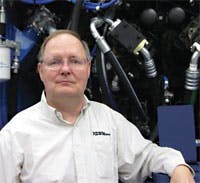editor
[email protected]
Penton had always had a warehouse nearby, which stored trade show displays, unused equipment and furniture, and, primarily, old financial records and archived issues of publications. The space was much more than we needed, and it was a substantial financial burden. So the decision was made to get rid of everything we didn’t need and move all archival material to a third-party storage and retrieval company.
I certainly understood the rationale, but I still needed access to our old issues — which go back to 1948. I was told I didn’t need regular access to the archived volumes because issues back to 1993 exist as digital files. I explained that readers sometimes inquire about articles from before then, and the facilities people found that hard to believe. So I did a favor for one of the facilities guys, and he found some room in an out-of-the-way corner of our office for all the archived volumes of H&P.
I’m sure he thought it was all for nothing, and that I’d rarely refer back to old issues. But he saw me rooting around the archives two weeks ago and asked what I was looking for. I replied that a reader had inquired about an article we published in 1982 about noise analysis and control. I found the article, and that same week, another reader inquired about an article describing how a valve malfunction was attributed to coil inductance after the control system was switched from 12 Vdc to 24 Vdc.
Many reader inquires aren’t so successful. I was able to find these old articles because the readers had detailed information about the material they were looking for; sketchy information generally leads us nowhere. A bunch of these articles are still relevant today. The science of sound is the same today as it was 20 years ago; it’s just the instrumentation for analyzing sound that has changed. And the issue with coil inductance in a cartridge valve still happens — that’s why the reader contacted me.
I also uncovered a real gem. Back in the late 1980s and early 1990s, we had a regular contributor who called himself the Old Timer of Royal Oak, Michigan. He wrote short articles describing problems he encountered and conquered in his many years working in fluid power. Most of these lessons still apply today, so I am reproducing them for our website, rather than just let them sit in the archives. If you’re interested in checking them out, you’ll find them in my blog, “The Hitch Post.”


